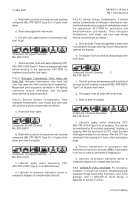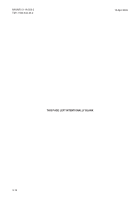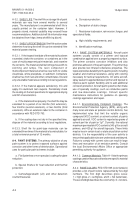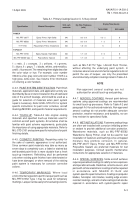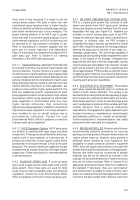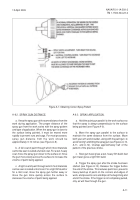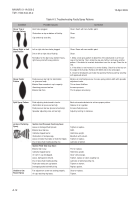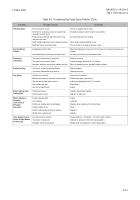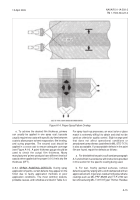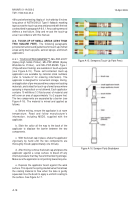TM-1-1500-344-23-2 - Page 179 of 240
A-9
NAVAIR 01-1A-509-2
TM 1-1500-344-23-2
15 April 2009
and other painting equipment (refer to Volume IV for
recommended units). These stainless-steel tank
washers (see Figure A-6) provide an alternative to the
labor intensive method of manually cleaning paint guns,
and minimize worker exposure to potentially harmful
solvents. The only exposure is during loading and
unloading of paint guns, solvent replenishment, and
replacing and disposing of the spent filters. A filtration
system allows the cleaning solvent to be reused
numerous times before disposal is required, thereby
reducing the quantity of spent solvent and rags that
must be disposed of as hazardous waste. Solvents
selected for use in the unit should be based on the type
of coatings to be removed. Operate and service system
per manufacturer’s instructions. Lid shall be kept closed
at all times except for loading and unloading paint spray
equipment or servicing system. Do not use this
equipment if leaks are present. Spent solvents shall be
disposed as necessary to ensure proper equipment
operation.
A-6.1.3. Non-Atomized Cleaning. Clean the paint spray
gun by placing solvent into the pressure pot or cup and
forcing solvent through the spray gun into a suitable
waste container. Do not atomize/spray the cleaning
solvent. The waste container shall be closed when not
in use to prevent solvent evaporation.
A-6.1.4. Manual Gun Cleaning. Clean the disassembled
paint spray gun by hand or by soaking the parts in a
container filled with solvent. Brushes may be used to
assist in cleaning detailed parts. The container shall be
closed while parts are soaking and when not in use. Do
not immerse the entire paint spray gun.
A-6.2.
REMOVAL OF DRIED PAINT. After several
months of use or when clogged with dried paint, the
spray gun may be cleaned by completely dismantling
and soaking metal components, such as the air nozzle,
fluid nozzle, and needle assembly, in MIL-PRF-83936
tank-type paint remover (see Chapter 4). Do not immerse
the entire paint spray gun or any plastic components
into a paint remover tank.
A-7. PREPARATION OF SURFACES FOR
PAINTING.
Much of the effectiveness of a paint finish
depends on careful preparation of the surface prior to
applying the coatings. Surface preparation includes
scuff sanding of old existing paint, cleaning, and chemical
conversion coating of any bare metal.
WARNING
Some coatings contain chromium compounds,
lead compounds, and other heavy metal
pigments. Wear eye and respiratory protection
and ensure adequate safety precautions are in
place to prevent exposure to dust during sanding
operations. Contact the local Industrial Hygiene
Activity or Occupational Safety and Health Office
for guidance on the proper selection of
respiratory protection and other personal safety
requirements.
CAUTION
When scuff sanding and feathering paint
coatings, avoid damage to metal and composite
substrates. Abrasion of substrate materials can
damage structural integrity.
NOTE
Proper surface preparation is essential. Most
poorly adherent paint coatings are caused by
poor surface preparation. Carefully follow all
cleaning, corrosion removal, surface treatment,
and solvent wipe-down procedures before
applying any coatings.
A-7.1. PREPARATION OF AGED PAINT. Aged paint
coatings (those allowed to cure seven days or more)
must be scuff sanded prior to repainting to ensure
adhesion of additional paint coatings. Scuff sand using
150 grit or finer aluminum oxide cloth (ANSI B74.18),
abrasive mat (A-A-58054), or random orbital sander
with aluminum oxide paper. Scuff sanding requires a
complete roughening of the paint surface; however,
avoid aggressive scuff sanding, which can expose the
substrate and promote corrosion of metal and
degradation of composite materials. Unevenly matched
Figure A-6. Paint Gun Washer
Back to Top

